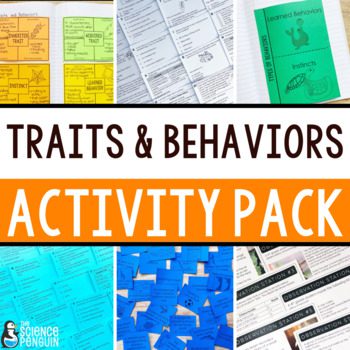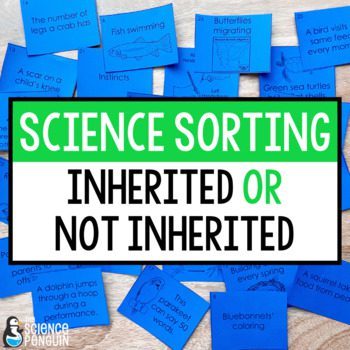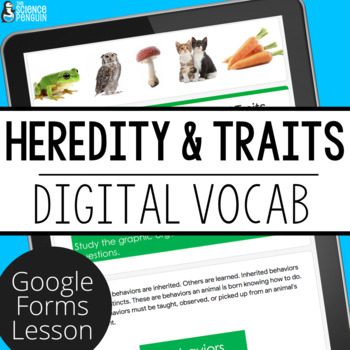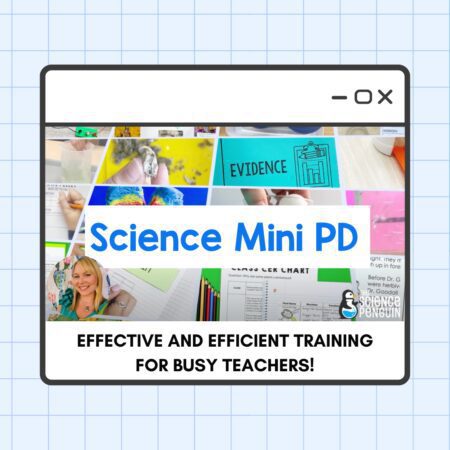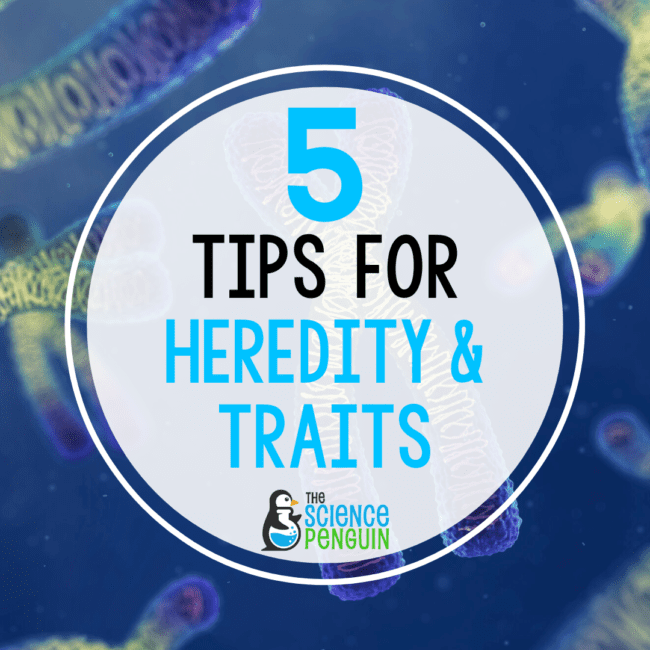
Heredity is a topic that leads to discovery and wonder because it encompasses so much of ourselves and the world around us.
As educators, we want to instill the knowledge of heredity and how individuals inherit and acquire traits in their lifetime.
Still, we want to be mindful of the students in our classrooms, as some may have different experiences or backgrounds. To help make everyone feel comfortable, I often used familiar animals, class pets, or plants as examples.
Whether you are new or seasoned with teaching these concepts, I want to provide you with valuable ideas to engage and support your students within this unit.
Tip #1: Traits Scavenger Hunt

Getting students outdoors with nature in science is a win for me! To get students thinking about how animals and plants inherited and acquired physical traits, give students a list of traits to search for when at school, neighborhood, or park.
As they find various elements, have them record what they see on a piece of paper or in their journal.
You can divide the list into inherited traits and acquired traits.
Inherited Traits:
- Find a plant that has thorns
- Find a plant that has waxy leaves
- Find an organism with long, pointed ears
- Find an organism with spots
Acquired Traits:
- Find a plant that has a change in color with its leaves
- Find an organism that got trimmed into a specific shape
- Find an organism with a broken part
- Find an organism with a regrown tail
Conclude by having students share their discoveries through a class discussion.
Tip #2: Heredity Creatures

As my students began to process inherited and acquired physical traits, they had a blast creating creatures that included two parents and their offspring.
Students were given various materials such as cups, pipe cleaners, and eyes and worked in teams to develop a family of creatures. The offspring had to include traits from both parent creatures. It was great to see their creativity shine, and they even added some variation of traits to their creatures to take it up a notch!
They had the time to share with their peers through a gallery walk and even had students guess which traits were inherited. I always enjoyed their student-centered discussions throughout this project.
Tip #3: Heredity Rhymes
Visual tools are helpful when helping students distinguish vocabulary terms.
Beneath each little rhyme, add examples to solidify the terms.
You can even do a little chant with hand motions to go along with it.

Tip #4: Sorting Relays
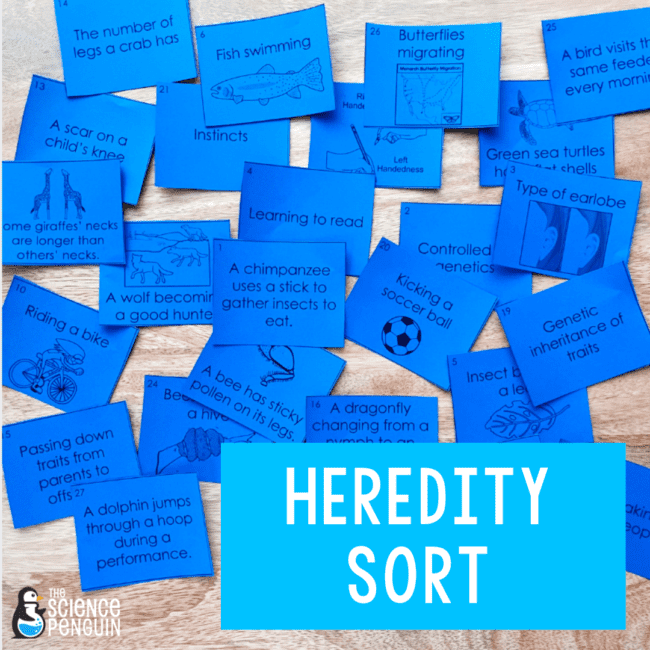
Students love to move and learn with Sorting Relays! You’ve got academic content and an opportunity for movement and teamwork.
Students review by sorting vocabulary terms, images, and brief descriptions related to inherited traits.
Are the traits inherited (including physical traits and instincts) or not inherited (learned behaviors and acquired traits)? Your students will be asking for more!
Check it out on TpT: Inherited Traits Science Sort
Tip #5: Digital Vocabulary

Want a way to assess your students with vocabulary formally?
The Heredity and Traits Digital Vocabulary lesson will allow your students to watch short video clips, analyze a diagram or graphic organizer, and read a short text.
There are 10 multiple-choice/checkbox questions to answer after each task that can be auto-graded in Google Forms to check for understanding.
Check it out on TpT: Inheritance Digital Science Vocabulary
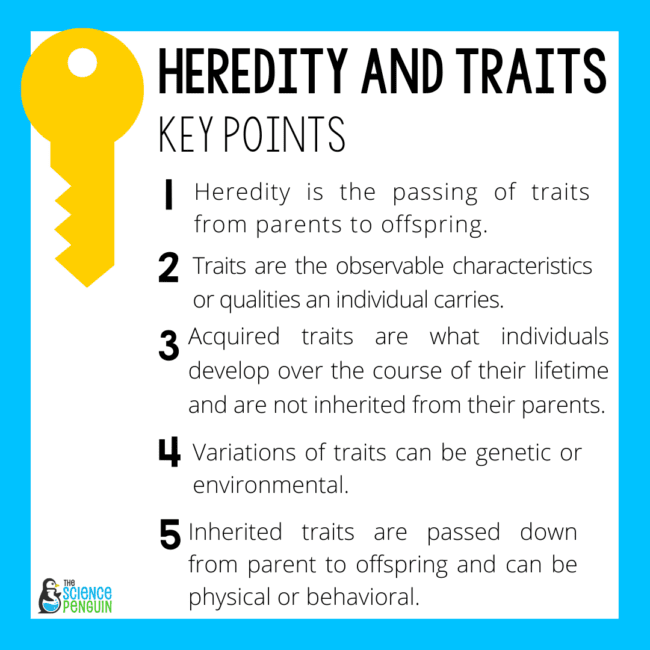
Access the Free Resource Library
This is an exclusive library of 40+ science printables, labs, activities, and games for grades 3-6. Sign up and check your email for immediate access.

